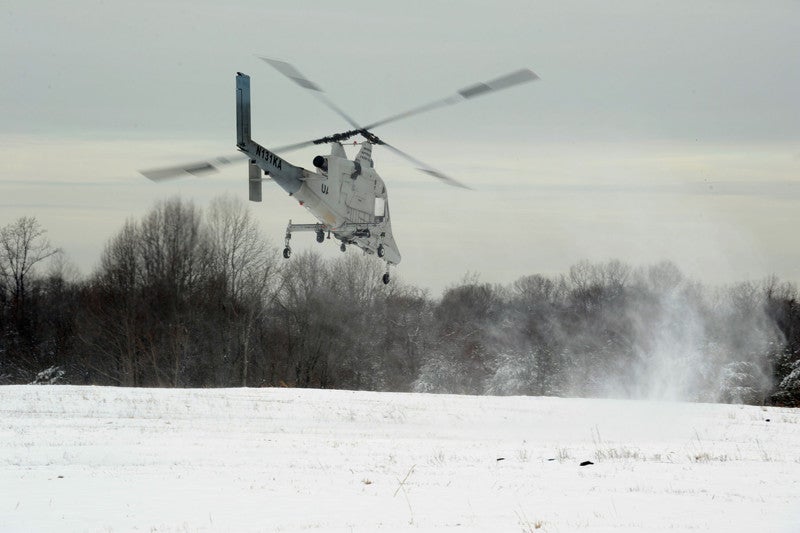Robot Helicopters Could Rescue You From the Backcountry Soon

'Lockheed's pilot-optional K-MAX helicopter is already in use by the military. (Photo by Office of Naval Research/John F. Williams)'
The helicopter flew low over the stranded hiker, scouting out a safe landing spot as the flames of a brush fire smoldered nearby. It touched down in a nearby clearing, the hiker scrambled aboard, and in a matter of seconds, the chopper was back in the air.
The demonstration in Rome, New York, last November wouldn’t have been notable, save for one detail: No one was flying the helicopter. And while the danger might not have been real, the technology, developed by Lockheed Martin and its subsidiary Sikorsky, was: a new class of autonomous vehicles that could soon be fighting fires and scooping up patients from the backcountry without human pilots.
The mission began with ground crews deploying a five-pound quadcopter to scope out the blaze and relay coordinates back to a K-MAX helicopter, which then automatically filled its sling-loaded pail and doused the fire. With that taken care of, the crews then launched a Desert Hawk—a fixed-wing drone small enough enough to easily fit in the vehicle or even backpack of a first responder—to track down the lost “hiker” using visual and infrared cameras. It passed on that information to another helicopter dubbed SARA which—without a pilot or any control from the ground—took off toward the hiker’s position. Using onboard sensors to identify a safe landing site, SARA recovered the hiker and returned to safety.
According to John McMillen, a business development manager at Lockheed, the smaller, portable aircraft have great potential as search and rescue tools. They can be quickly deployed to search a larger area than a human in a shorter amount of time and are far cheaper and easier to use than piloted search aircraft. With their onboard sensors, they have better eyes than most humans, too.
The Department of the Interior has already begun researching small unmanned aircraft technology for use in wildfire management, wildlife monitoring, geologic and other surveys, as well as search and rescue, and plans to step up its use of these smaller systems by 2020.
“We’ve had a lot of interest from the Park Service, law enforcement and municipalities,” McMillen said, noting that these systems are slowly becoming more prolific.
But after the search is over, the rescue could also benefit from automation. “With unmanned systems, whether it’s day or it’s night, you can fly,” says McMillen. Robot pilots can get airborne in conditions that might trip up humans, including after dark or in adverse weather.
According to McMillen, these systems can also be set up in ways that range from full autonomy to simply assisting pilots by identifying landing zones and flying search routes, freeing up the humans onboard for other tasks.
The US military already uses robot helicopters. K-MAX has been used to deliver supplies in Afghanistan, reducing the risk to human life and freeing pilots up for more complex tasks.
But to transition to domestic roles, they need to learn to talk to other aircraft, most of which are still piloted by humans. In a combat zone, crowded skies haven’t been an issue (nor are they a problem during forest fires, which normally become no-fly zones). But according to McMillen, there are no rules in place for larger systems like K-MAX and SARA over the majority of U.S. airspace, and the technology for dealing with other aircraft during search and rescue or other missions hasn’t been integrated into these unmanned systems yet.
“There is so much more capability that’s not being exploited,” McMillen says. It might only be a matter of time before the first face a lost hiker sees is the sensor suite of a flying robot.